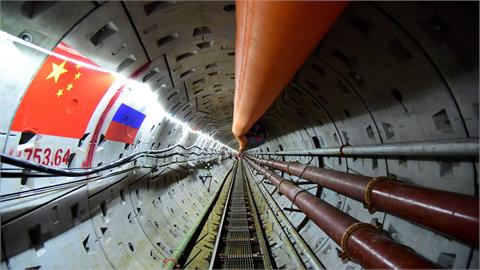Global liquefied natural gas (LNG) demand growth is forecast to increase by 4% this year driven by the Asia Pacific region with the US set to supply the bulk of this demand, International Energy Agency (IEA) analysts told Anadolu Agency Tuesday.
Last year, global LNG demand climbed 1% although overall gas demand showed a 1.9% decline due to the unprecedented energy demand shock from the COVID-19 pandemic, according to the IEA's latest Gas Market Report, Q2.
"We have a conservative view of about 4% growth for this year in LNG demand. We see a recovery mostly driven by the Asian demand side. In case of a faster recovery, there is an upside potential for LNG consumption," the IEA's Senior Natural Gas Analyst, Jean-Baptiste Dubreuil, said.
The IEA's report found that global LNG trade grew by 1.4% in 2020, showing resilience despite a drop in gas consumption. Nevertheless, this rate is a far cry from the double-digit annual growth recorded since 2016.
LNG import growth is set to be driven solely by the Asia Pacific region, which is expected to see a 7% increase in LNG inflows while all other regions are poised to see declining imports, the report said.
"On the supply side, it is mainly US LNG that will grow in the next 3 to 4 years with the projects currently under construction. Qatar has made an announcement to commit its expansion but apart from that, the bulk of the development we see on the supply side will come from the US," Dubreuil noted, adding that the current situation is not very favorable for investments for major energy companies.
- Electricity demand to determine gas growth
Overall natural gas demand worldwide is expected to rebound by 3.2%, or 125 billion cubic meters, this year by offsetting last year's losses due to the pandemic.
"Among consuming sectors, power generation remains the most challenging due to a combination of low electricity demand growth and increasing competition from renewables and cheaper alternative fossil fuels," Dubreuil said.
As electricity accounts for 40% of global natural gas consumption, he said last year's drop in electricity demand growth had an impact on natural gas demand. Last year, global electricity demand was estimated to drop by 2%.
Gas demand in the power generation sector fell by 2.1% in 2020 and this year it is forecast to see a slight year-on-year increase of about 1.5%, the IEA's report found.
However, in light of macroeconomic developments, industrial gas consumption is likely to increase the most by 5.4% this year, Dubreuil stated while the residential sector, accounting for 25% of the global gas consumption, is mostly temperature driven.
- Turkey main driver of Europe’s gas-fired consumption
Gergely Molnar, the IEA's natural gas analyst, said Turkey has been the main driving force in Europe's gas-fired consumption in 2020.
"The gas-fired generation increased by over 20% year on year in Turkey. It has been at the expense of lignite and coal-fired generation as well as lower hydro. When we look at the first quarter of this year, we see an even more robust rise in gas-fired generation increasing by over 50% compared to the same period due to largely lower hydro generation," Molnar said.
Turkey is one of the most promising markets in gas demand growth, with an increase of over 5% in residential consumption and a rise of 2% in industrial consumption last year.
- Gas storage inventories in Europe and US below five-year average
Molnar, commenting on falling gas storage inventories, said levels in the US have been rather low compared to a five-year average due to harsh winter conditions.
"In Europe, the gas storage inventories are now approximately 50% below the 5-year average due to the prolonged heating season and about 25 days below last year's storage levels. This obviously means some additional optionality for market players to bring more gas into the European market," he concluded.
(Anadolu Agency, April 20, 2021)



